The images and text below are taken from "Bristol before the Camera: The City in 1820-30, Watercolours and Drawings from the Braikenridge Collection" Sheena Soddard, 2001.
Although these images were made over 200 years after the Tudor period, many scenes in the city had remained unchanged since Medieval times. We have taken care to choose images that could fit the Tudor period without containing any anacronisms.
Click on the images to view larger and printable versions. |
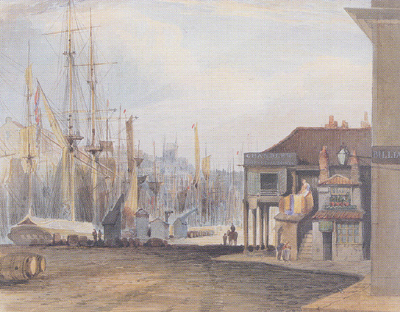
|
"This view is along Narrow Quay, looking towards today's City Centre from opposite the Watershed Media Centre, with the church of St Michael's on the skyline. The forest of masts in the middle of a city captivated visitors and it was Alexander Pope in 1739 who had coined the perfect description of the hundreds of ships moored there: 'the oddest & most surprising sight imaginable...a Long Street full of ships in the Middle & Houses on both sides looks like a Dream'. Sea-going ships, far from the sea, unloading on quays which were city thoroughfares had a unique attraction." (pl.101, page 101). |

|
"Tower Lane was an intra-mural lane following the inside of the first town wall from the church of St John-on-the-Wall to the Pithay...Braikenridge's catalogue notes on this area included: 'Tower lane has long been the residence of profligate women & the small public Houses in and about that street are full [of] the dissolute of the other sex.' (pl.23, page 29). |
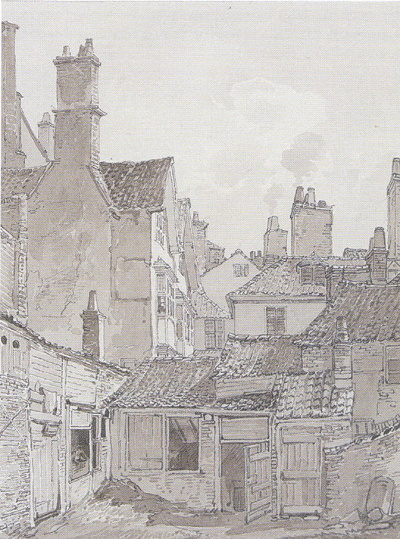
|
"Castle Green was a street which had taken its name from the former castle...O'Neill seems to have been fascinated by the complexity of roofs and chimneys in this area of dense housing." (pl.35, page 39). |
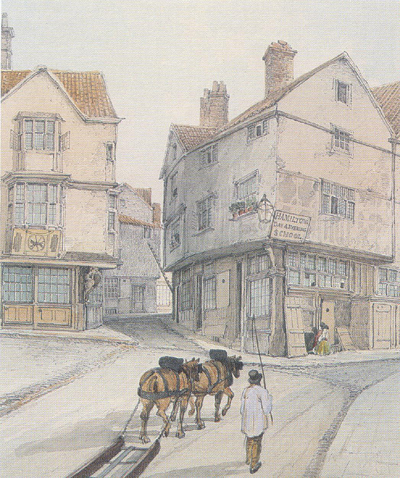
|
"In the foreground, horses pull a sledge up Castle Mill Street. Sledges with iron runners had been practical for negotiating cobbled streets and quaysides and the narrow alleys of central Bristol." (pl.34, page 38). |
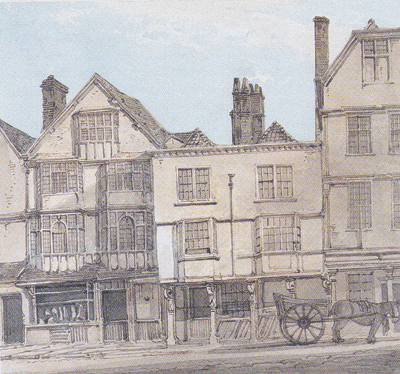
|
"Old Market was Bristol's oldest market, held in the street to the east of the castle. The Court of Piepoudre (pieds poudres: dusty feet) existed from the thirteenth century and sat to adjudicate over market issues. In later centuries it sat in the buildings shown here." (pl.41, page 45). |
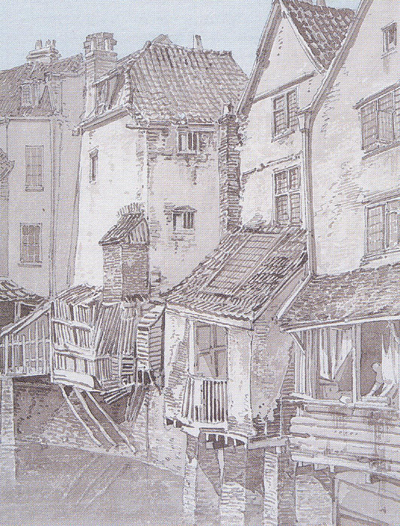
|
"This drawing is of the backs of the houses, overlooking the Frome. It is a typical image of the ramshackle housing that was in the area...This section of the river was one of the last to be covered over in the centre of the city...in the late 1860s." (pl.46, page 49). |
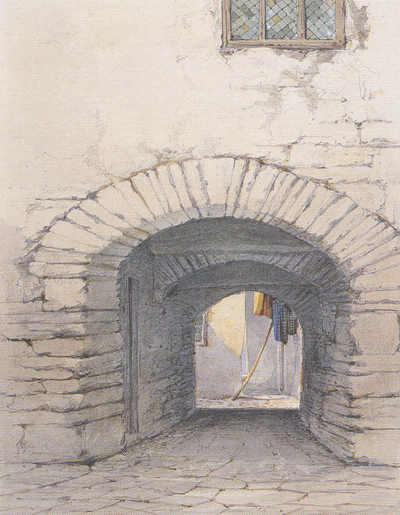
|
"Marsh street (which today links the roundabout at the western end of King Street with Baldwin Street) could be reached from Broad Quay by walking through this arched passage. We are looking towards Marsh Street, which is the chink of blue light beyond the washing hung out to dry." (pl.78, page 78). |






